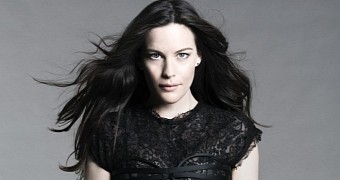The issue of sexism and ageism in Hollywood is a thorny one, especially since many studio bosses refuse to acknowledge that it even exists. Were we to sum it up in a few words, it would go something like this: the male movie star in Hollywood can be as old as 60, while a female movie star will never be older than 35.
With the exception of actresses like Meryl Streep, Julia Roberts or Helen Mirren, older actresses don’t get leading parts anymore. Those who are past 35 don’t either, often being relegated to the status of “a sort of second-class citizen,” as Liv Tyler describes it in her new interview with More Magazine.
“It’s not fun when things start to change”
Liv has made the transition from the big screen to television, like many of her peers, both male and female. Her choice had nothing to do with money, having probably been prompted by the fact that television projects are showing more originality and, at the same time, offering more room to female thespians because they’re more diverse.
To promote the second season of HBO’s “The Leftovers,” where she stars opposite Justin Theroux, she tells More that ageism not only exists in Hollywood but is actually still thriving, despite the negative attention shone on it in recent years.
“38 is a crazy number. It’s not fun when you see things start to change,” she says. “When you’re in your teens or twenties, there is an abundance of ingénue parts which are exciting to play. But at [my age], you’re usually the wife or the girlfriend, a sort of second-class citizen. There are more interesting roles for women when they get a bit older.”
She also says that working in television is proving half-frustrating to her because, unlike in the movies, she’s not in control of her character’s story, for the mere reasons that writers are coming up with the story as they go. There is no finality to her experience yet, but she’s happy to have made the transition.
The pay gap is also real
Another problem in the film industry that’s been highlighted many times in the past couple of years is that of the pay gap between actors and actresses: an A-list actress will be paid considerably less for starring opposite an A-list actor, even if they have the exact amount of onscreen time in the film and they’re rated equally in terms of star power.
This had been known for some time but was confirmed in the headline-grabbing Sony Hack from last November, when it was revealed that Jennifer Lawrence and Amy Adams were paid less than Jeremy Renner, Bradley Cooper and Christian Bale for “American Hustle,” although it was billed as an ensemble piece.
Things have changed in this respect, with actresses like Charlize Theron finding the courage in this story to ask for a salary renegotiation and demanding equal pay. Chris Hemsworth, for instance, was paid more than Charlize for “Snow White and the Huntsman” (even though she was lead), so she threatened to quit the planned sequel if she didn’t get a raise. She got it.

 14 DAY TRIAL //
14 DAY TRIAL //